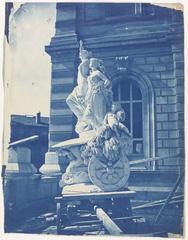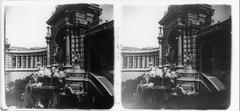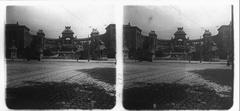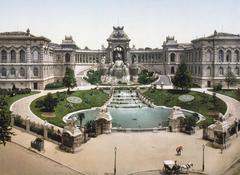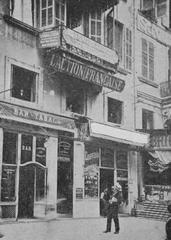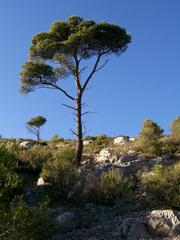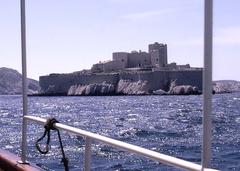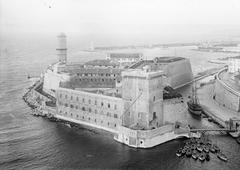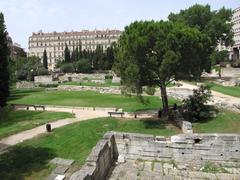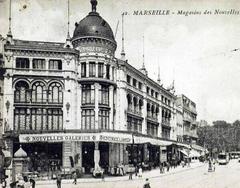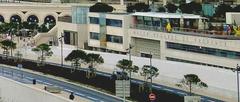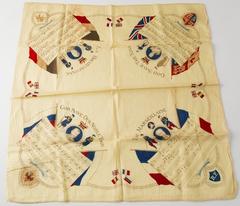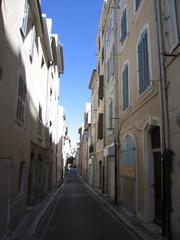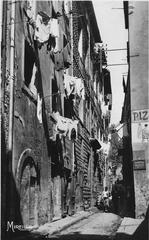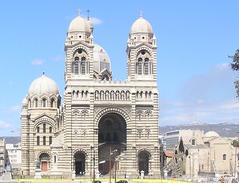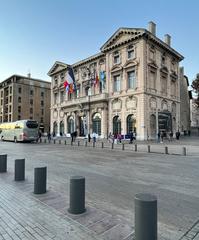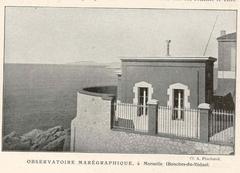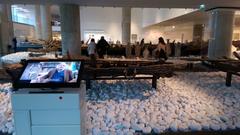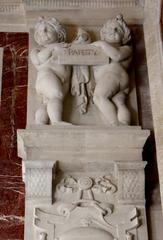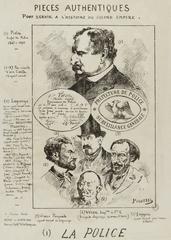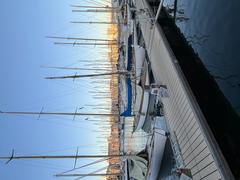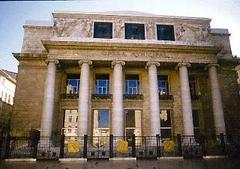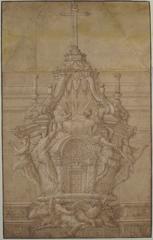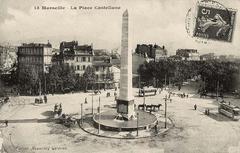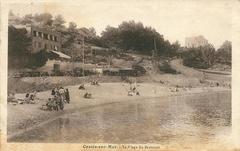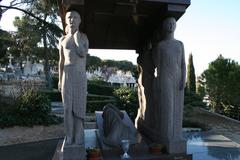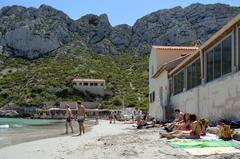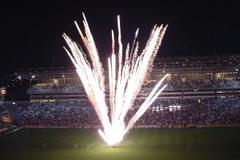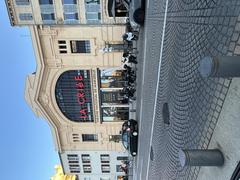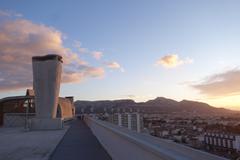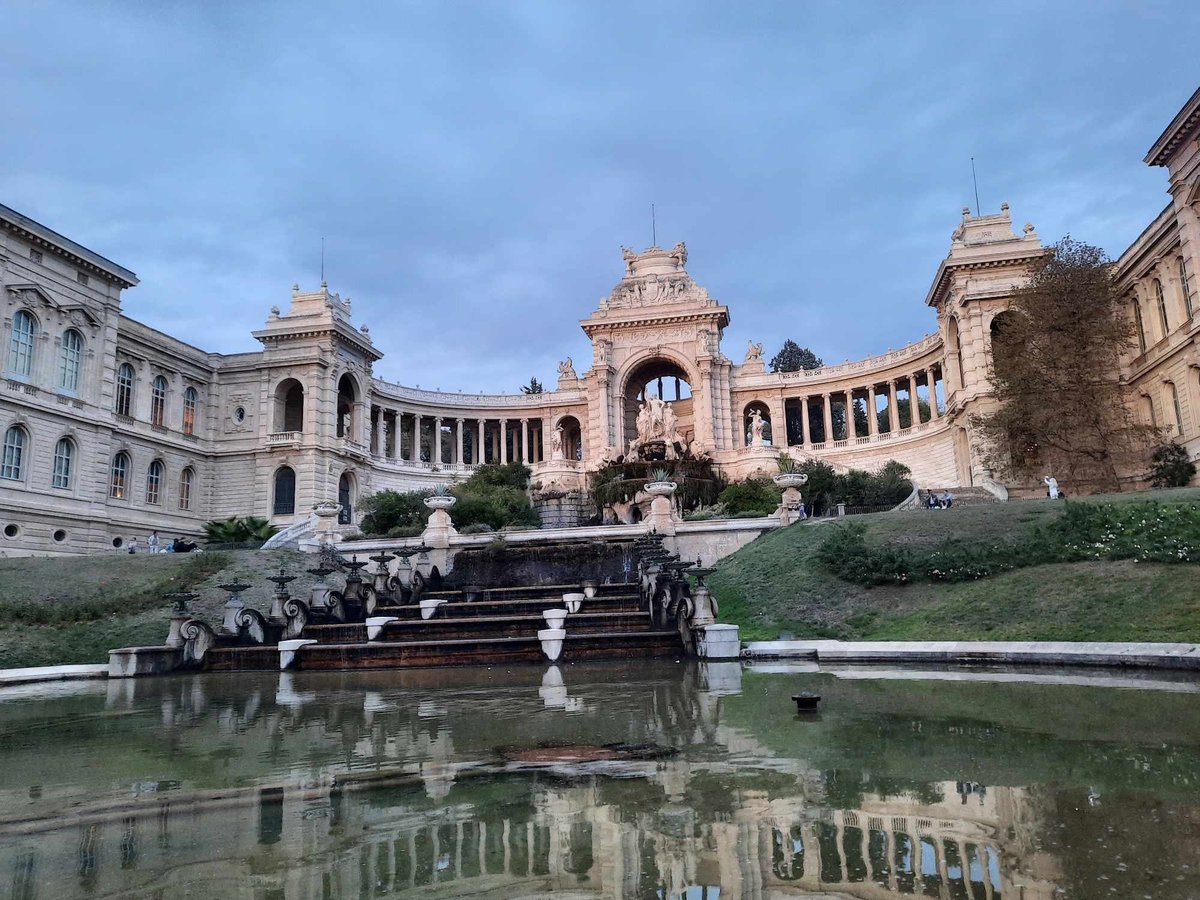
Palais Longchamp Marseille: Visiting Hours, Tickets, and Historical Sites Guide
Date: 15/06/2025
Introduction: The Significance of Palais Longchamp
At the heart of Marseille stands the Palais Longchamp, a stunning 19th-century architectural masterpiece and a symbol of the city’s ingenuity, resilience, and cultural vibrancy. Originally conceived to celebrate the arrival of fresh water via the Canal de Marseille, the palace today embodies a unique blend of historical importance, neoclassical grandeur, and public utility. Designed by Henri-Jacques Espérandieu, also famed for his work on Notre-Dame de la Garde, the Palais Longchamp is as much a civic triumph as it is an artistic wonder, boasting dramatic colonnades, triumphal arches, elaborate fountains, and lush gardens (marseille-tourisme.com; marseillecityofculture.eu).
Beyond its remarkable architecture, Palais Longchamp serves as a cultural hub, housing both the Musée des Beaux-Arts and the Muséum d’Histoire Naturelle. The complex sits within the expansive Parc Longchamp, where historical, artistic, and natural elements converge to create a multifaceted visitor experience. Annual cultural events, including the Festival of Water and Light and jazz festivals, ensure that the site remains a thriving center for community and the arts (touristplatform.com).
Whether your interests lie in history, art, science, or leisurely walks through grand gardens, Palais Longchamp is an essential destination for anyone exploring Marseille’s past and present.
Table of Contents
- Introduction
- Origins: Addressing Marseille’s Water Crisis
- Architectural Vision and Construction
- Symbolism and Civic Pride
- Water and Culture: Dual Purpose
- Artistic Features and Gardens
- Visitor Information
- Events and Cultural Significance
- Museums at Palais Longchamp
- Parc Longchamp: Gardens and Parkland
- Frequently Asked Questions (FAQ)
- Practical Summary and Visitor Tips
- References
Origins: Addressing Marseille’s Water Crisis
During the early 1800s, Marseille was plagued by water shortages due to rapid urbanization and industrial growth. The situation reached a crisis during the cholera epidemic of 1835, which exposed the dire need for a reliable fresh water supply (marseille-tourisme.com). The solution—transporting water from the Durance River, over 85 kilometers away—required an ambitious engineering project: the Canal de Marseille.
Led by engineer Franz Mayor de Montricher and supported by Mayor Maximin Consolat, the project included the construction of 18 aqueduct bridges. The monumental terminus for this canal, Palais Longchamp, was envisioned to celebrate this engineering feat and to symbolize Marseille’s transformation (marseillecityofculture.eu).
Architectural Vision and Construction
Construction of the palace and canal began in 1862 and concluded in 1869. Espérandieu’s Neo-Classical and Second Empire-inspired design features grand stone colonnades, domes, and triumphal arches, all drawing from Ancient Greek and Roman motifs. Locally quarried stone and Italian marble emphasize both Marseille’s heritage and cosmopolitan aspirations (provencetourguide.com).
The central water tower, or Château d’Eau, serves as both a functional reservoir and a dramatic architectural centerpiece. Flanked by symmetrical colonnades and museum wings, the palace’s composition is carefully balanced and visually striking.
Symbolism and Civic Pride
The Palais Longchamp is more than a functional monument; it is imbued with symbolic value. Its central fountain, created by Jules Cavelier, features an allegorical female figure representing the Durance River, surrounded by figures of abundance and agricultural fertility (marseille-tourisme.com). Busts of Mayor Consolat and engineer de Montricher are displayed beneath the water tower’s triumphal arch, honoring their roles in the project (13.agendaculturel.fr).
Water and Culture: Dual Purpose
From its inception, the palace was designed to serve as both a celebration of water and a center of culture. The two wings house leading Marseille museums:
- Musée des Beaux-Arts (left wing): Founded in 1801, it offers a rich collection of art spanning the 16th to 19th centuries.
- Muséum d’Histoire Naturelle (right wing): Showcasing zoological, paleontological, mineralogical, and ethnographic treasures.
This integration of art, science, and engineering was unique for its time and remains central to the site’s mission (packyourbags.org).
Artistic Features and Gardens
The palace’s decorative program enlisted notable artists such as Antoine-Louis Barye, who sculpted the iconic animals at the entrance, and Jules Cavelier, who created the central fountain group. Additional statues representing the four seasons were added in the early 20th century, reinforcing the link between water, nature, and the cycles of life (marseillecityofculture.eu).
Behind the palace lies Parc Longchamp, a landscaped garden combining formal French parterres with informal English-style lawns and groves, highlighted by water channels, pools, and the remnants of the historic zoo (provence-alpes-cotedazur.com).
Visitor Information
Visiting Hours
- Palais Longchamp Gardens: Open daily, generally from dawn until dusk. Hours vary seasonally.
- Museums: Open Tuesday to Sunday, typically from 10:00 AM to 6:00 PM. Closed Mondays and select holidays (marseille.fr).
Tickets and Admission
- Gardens: Free entry.
- Museums: Standard ticket €6–€10; discounts for students, seniors, children. Free for EU residents under 26 and on the first Sunday of each month. Combined tickets and Marseille City Pass available (marseille-tourisme.com).
Guided Tours and Accessibility
- Guided tours (in French, with some English options) can be booked online or onsite.
- Ramps, elevators, and accessible restrooms are available throughout the palace and park.
Travel Tips and Nearby Attractions
- Public Transport: Metro Line 1 (Cinq Avenues – Longchamp), Tram Line T2 (Longchamp), and several bus routes.
- Nearby Sites: Old Port (Vieux-Port), Notre-Dame de la Garde Basilica, Le Panier district, and MuCEM.
- Best Times to Visit: Early mornings or late afternoons for quieter experiences and best light for photography.
Events and Cultural Significance
The palace and park are focal points for citywide celebrations. The annual Fête de l’Eau et de la Lumière (Festival of Water and Light) and the Marseille Jazz des Cinq Continents attract thousands, turning the site into an open-air stage for music, art, and performance (touristplatform.com).
Museums at Palais Longchamp
Musée des Beaux-Arts de Marseille
- Collection: Paintings, drawings, and sculptures from the 16th to 19th centuries, including works by Perugino, Rubens, Delacroix, and Provençal masters.
- Visitor Experience: Wheelchair accessible, guided tours, family workshops, and temporary exhibitions (Musée des Beaux-Arts de Marseille).
- Hours and Tickets: Tuesday–Sunday, 10:00–18:00; €6–€8 standard, free for under 26 EU residents and first Sundays.
Muséum d’Histoire Naturelle de Marseille
- Collection: Over 80,000 specimens—zoology, paleontology, mineralogy, and ethnography.
- Features: Interactive children’s areas, educational workshops, and accessible displays (Muséum d’Histoire Naturelle de Marseille).
- Hours and Tickets: Tuesday–Sunday, 10:00–18:00; €6–€8 standard, free for children under 18 and first Sundays.
Combined Visitor Tips
- Combined Tickets and City Pass: Consider the Marseille City Pass for savings (Marseille City Pass).
- Facilities: Lockers, accessible restrooms, café, and stroller access.
- Language Support: Most exhibits in French, with English translations on key displays. English tours available by reservation.
Parc Longchamp: Gardens and Parkland
Layout and Design
Stretching across eight hectares, Parc Longchamp blends formal French gardens with English landscape design (marseille-tourisme.com). Highlights include:
- Jardin du Plateau: Symmetrical lawns, geometric flowerbeds, and trimmed hedges.
- English Garden: Meandering paths, mature trees, and picturesque glades.
- Fountains and Water Features: The palace’s monumental fountain, cascading basins, and a tranquil pond.
- Historic Zoo Remnants: Ornamental pavilions, animal enclosures, and whimsical architectural details from the now-closed zoological garden.
Facilities and Activities
- Observatory: Astronomy sessions and planetarium shows at the Marseille Observatory.
- Playgrounds and Picnic Areas: Family-friendly amenities throughout.
- Cultural Events: Jazz festivals, art installations, open-air cinema, and summer festivals.
Park Hours and Access
- Hours: Generally 8:00 AM – 7:45 PM in summer; shorter hours in winter (monumentsdemarseille.com).
- Admission: Free entry.
- Accessibility: Most paths are accessible, though some historic landscaping may present challenges; accessible restrooms available.
Frequently Asked Questions (FAQ)
Q: What are the Palais Longchamp visiting hours?
A: Gardens are open daily from early morning until dusk (hours vary by season). Museums are open Tuesday–Sunday, 10:00–18:00, closed Mondays.
Q: Is there an admission fee?
A: Gardens are free. Museums cost €6–€10, with discounts and free days for some visitors.
Q: Are guided tours available?
A: Yes, including regular French tours and English tours by advance booking.
Q: Is the palace accessible?
A: Yes, with ramps, elevators, and accessible restrooms.
Q: How do I reach Palais Longchamp?
A: By Metro Line 1 (Cinq Avenues – Longchamp), Tram Line T2 (Longchamp), or bus.
Q: Are pets allowed in the park?
A: Pets are allowed on leashes; check park rules for details.
Q: What events take place at Palais Longchamp?
A: Annual festivals such as the Water and Light Festival, jazz concerts, and art exhibitions.
Practical Summary and Visitor Tips
- Check current hours and events on official websites before your visit.
- Allocate 1–2 hours for each museum; a half-day for the full complex.
- Bring a camera for the palace’s fountains, sculptures, and gardens.
- Visit early or late in the day for a more peaceful experience.
- Explore nearby Marseille sites to enrich your itinerary.
- Download the Audiala app for guided tours and real-time updates.
Alt text: Palais Longchamp entrance featuring lion statues, a key Marseille historical site
Alt text: Central fountain at Palais Longchamp depicting allegorical figures representing water
Related Articles
- Notre-Dame de la Garde Basilica: Marseille’s Iconic Landmark
- Top 10 Marseille Historical Sites to Visit
- Guide to Museums in Marseille
References
- marseille-tourisme.com
- provencetourguide.com
- marseille.fr - Musée des Beaux-Arts
- monumentsdemarseille.com
- touristplatform.com
- marseillecityofculture.eu
Call to Action:
Plan your journey to Palais Longchamp today! Download the Audiala app for expert-guided tours, current visitor information, and exclusive content. Follow us on social media for updates on Marseille’s top attractions and cultural events.

